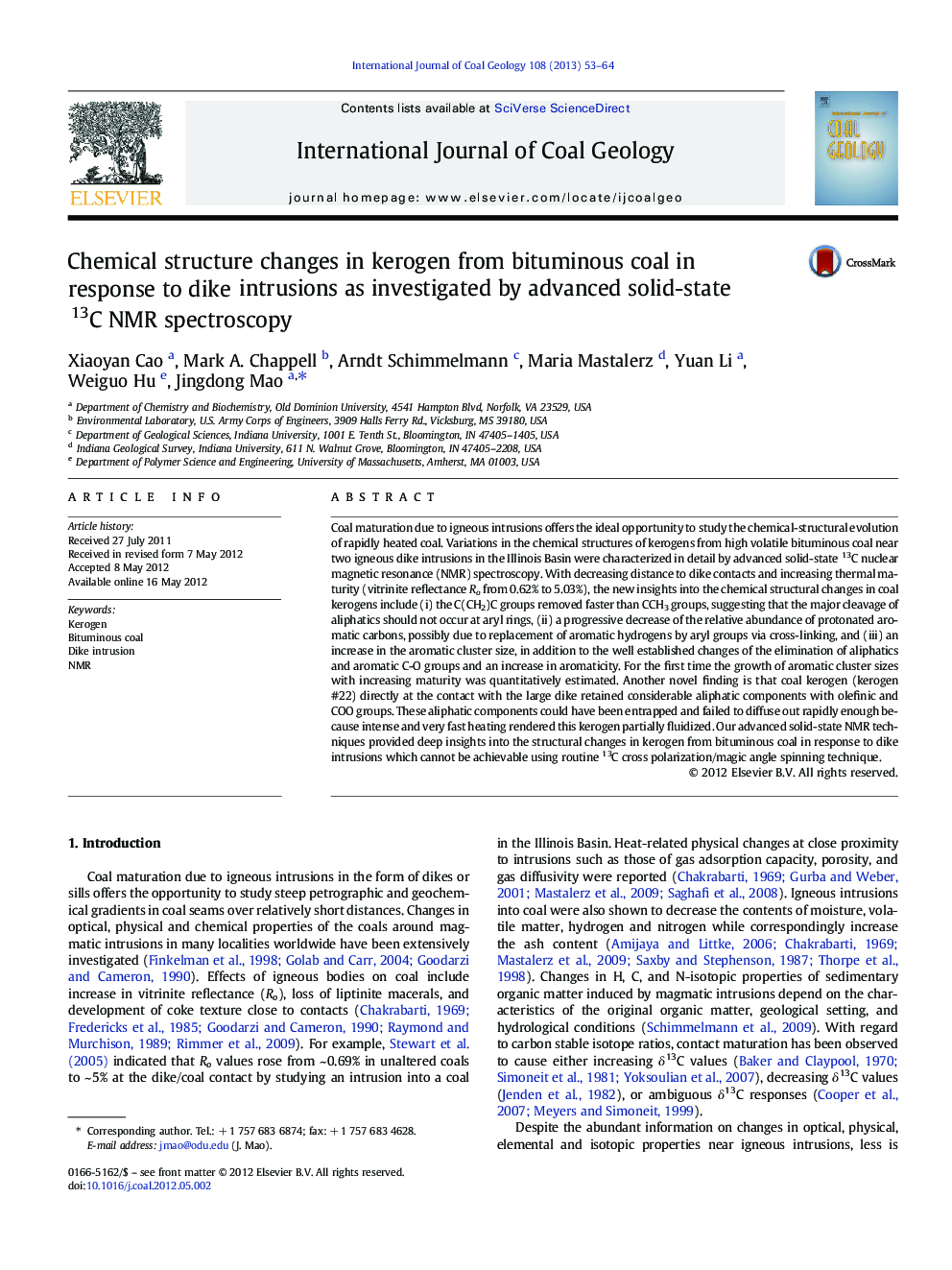| کد مقاله | کد نشریه | سال انتشار | مقاله انگلیسی | نسخه تمام متن |
|---|---|---|---|---|
| 1753416 | 1522586 | 2013 | 12 صفحه PDF | دانلود رایگان |

Coal maturation due to igneous intrusions offers the ideal opportunity to study the chemical-structural evolution of rapidly heated coal. Variations in the chemical structures of kerogens from high volatile bituminous coal near two igneous dike intrusions in the Illinois Basin were characterized in detail by advanced solid-state 13C nuclear magnetic resonance (NMR) spectroscopy. With decreasing distance to dike contacts and increasing thermal maturity (vitrinite reflectance Ro from 0.62% to 5.03%), the new insights into the chemical structural changes in coal kerogens include (i) the C(CH2)C groups removed faster than CCH3 groups, suggesting that the major cleavage of aliphatics should not occur at aryl rings, (ii) a progressive decrease of the relative abundance of protonated aromatic carbons, possibly due to replacement of aromatic hydrogens by aryl groups via cross-linking, and (iii) an increase in the aromatic cluster size, in addition to the well established changes of the elimination of aliphatics and aromatic C-O groups and an increase in aromaticity. For the first time the growth of aromatic cluster sizes with increasing maturity was quantitatively estimated. Another novel finding is that coal kerogen (kerogen #22) directly at the contact with the large dike retained considerable aliphatic components with olefinic and COO groups. These aliphatic components could have been entrapped and failed to diffuse out rapidly enough because intense and very fast heating rendered this kerogen partially fluidized. Our advanced solid-state NMR techniques provided deep insights into the structural changes in kerogen from bituminous coal in response to dike intrusions which cannot be achievable using routine 13C cross polarization/magic angle spinning technique.
► The C(CH2)C groups are removed faster than CCH3 groups with increasing maturity.
► Protonated aromatic carbons decrease with increasing maturity due to crosslinking.
► Aromatic cluster sizes increase with increasing maturity.
► Kerogen directly at the contact retains considerable aliphatic components.
Journal: International Journal of Coal Geology - Volume 108, 30 March 2013, Pages 53–64